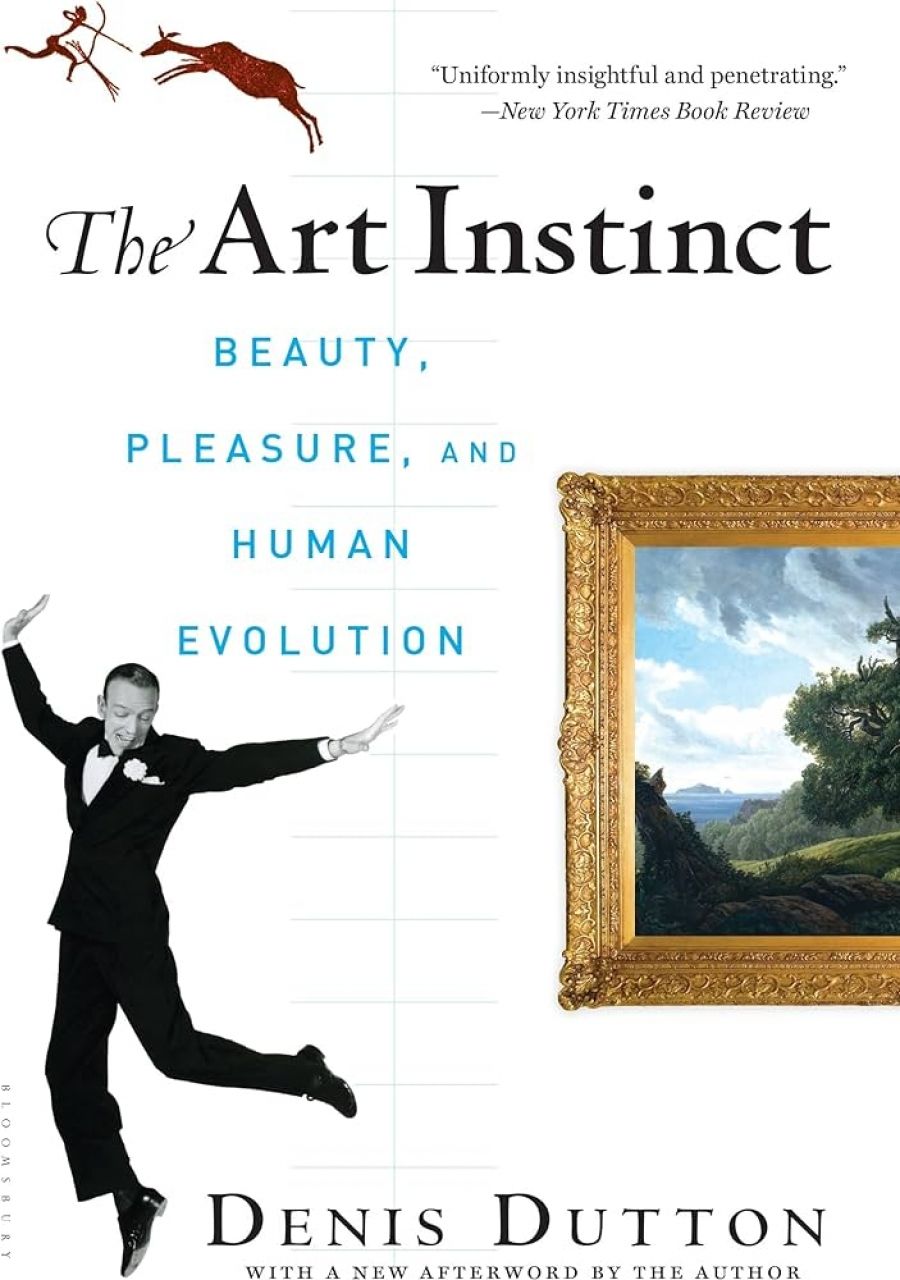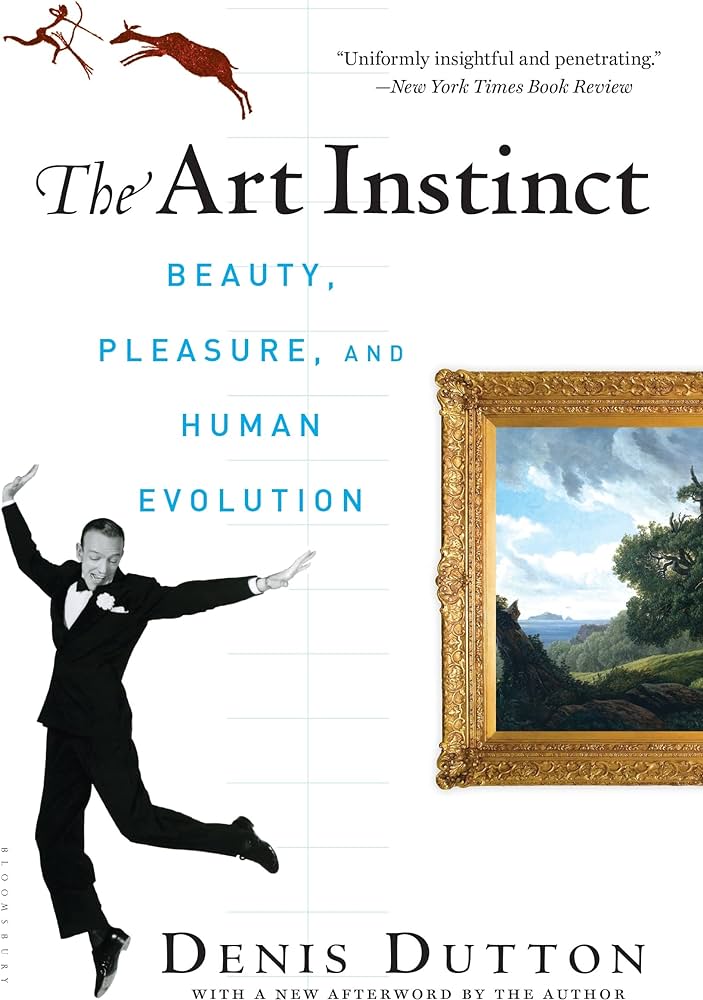
- Free Article: No
- Contents Category: Philosophy
- Review Article: Yes
- Article Title: The mystery of blue
- Online Only: No
- Custom Highlight Text:
If beauty is in the eye of the beholder and taste is subjective, why is there often overwhelming agreement that a particular thing is beautiful? Are tastes shaped by brain structure, unconscious psychic drives, society or culture? For almost half a century, the idea of innate, universal and cross-cultural aesthetics has been hotly contested in art theory and cultural studies. Now Denis Dutton argues that our aesthetic responses are instinctual. He has timed his book well. Freud has fallen from favour, post-modernism is generally despised and Darwin studies are on the rise.
- Book 1 Title: The Art Instinct
- Book 1 Subtitle: Beauty, pleasure and human evolution
- Book 1 Biblio: Oxford University Press, $49.95 hb, 279 pp, 9780199539420
- Book 1 Cover Small (400 x 600):

- Book 1 Cover (800 x 1200):

Dutton is an American philosopher of art based in New Zealand, and founding editor of the Arts & Letters website. In The Art Instinct:Beauty, Pleasure and Human Evolution, he invokes evolutionary psychology to explain our passion for art, what draws us to it and what compels us to make it. Citing Steven Pinker’s The Language Instinct (1994), Dutton contends that humans acquired innate aesthetic tastes during the Pleistocene epoch. We came to prefer landscape features providing the food, shelter and prospects necessary for survival, for instance, and to lust after body shapes most conducive to sexual reproduction. The art instinct is not a single impulse or open-ended list of desiring or benefit-seeking responses, according to Dutton, but a finite and complex set of subinstincts evolved from two distinct processes: natural selection and sexual selection. By ‘reverse-engineering’, he says, we can discover the art instinct’s general features.
Dutton discounts Freud’s theory that libidinous drives, or ‘surplus energy’, are the source of sexual display, and dismisses the ‘Gallic bravado’ of Derrida and other French philosophers. His strongest criticism is reserved for ‘the all-embracing ideology of social construction’ adopted by ‘most culture and art theorists’ in the twentieth century. On the basis of these generalisations, he sets about reinstating a conservative strain of Anglo American aesthetics, claiming that ‘left just to itself, philosophy of art has not done too badly’. He lucidly summarises aspects of the history of art philosophy from Aristotle to Immanuel Kant, Clive Bell, R.G. Collingwood, George Dickie and Arthur Danto. Proceeding by example, counter-example and occasional thought experiments, he revisits twentieth-century debates in critical art theory. He insists on the primacy of the artist’s intention, weighing into William K. Wimsatt and Monroe C. Beardsley’s case for the ‘intentionalist fallacy’ and attacking the de-centring theories of Barthes and Foucault. We instinctively desire communion with the artist, and therefore require authenticity and reject forgeries. Great art demonstrates ‘cool objectivity’, states Dutton, whereas kitsch is ‘pretentious, self-serving tripe’. Those who claim that other cultures have a different concept of art ‘exoticise’ them, he explains, rejecting claims for cross-cultural transformation as ‘wildly exaggerated’.
In a bid to settle on art’s ‘natural’ centre, Dutton provides a cluster of twelve defining characteristics, such as ‘direct pleasure’ and ‘representation’. From this ‘uncontested centre’, he explains, we can move out to consider the most marginal cases. For instance, Duchamp’s Fountain (1917), an ‘anti-art’ ready-made urinal, passes Dutton’s cluster test overall, but fails on instinctual emotion, individuality, skill and beauty. He explains how Fountain is inimitable: ‘Haydn invented the string quartet, and it could “take off” in the hands of Beethoven and Schubert: that’s what it is to pioneer an art form. It is a mistake to think of the readymade in the same way.’ Sarcastically, Dutton concedes that Fountain is a ‘theoretical gesture … of incandescent genius’.
Dutton’s judgement bodes poorly for performance artists Yuan Cai and JJ Xi, who claimed that they entered the recently reopened Tate Modern and took turns to urinate on Duchamp’s Fountain (1964 version) while being videotaped. Their performance continued the anti-art dialogue that Duchamp initiated. Perhaps it is right to downplay its importance, but Dutton’s failure to take seriously the significant role cultural politics has played in art production and reception since the Industrial Revolution weakens the scope and appeal of his approach. He says the arts are ‘not essentially’ political, because morality and the conceptual aspect of politics are not compatible with aesthetic emotion and value. They do not fall within a definition of art that prioritises beauty and pleasure. Yet political and commercial imperatives have made an enormous impact on art, and politically inflected art has spoken powerfully to many artists, cultural commentators, curators and art audiences alike.
Defining marginal cases of art is not only difficult and a waste of time, Dutton explains: it threatens the validity of philosophical analysis. He uses the analogy of the Law, citing the adage ‘hard cases make bad law’. The analogy is telling. The common law system is based on precedent and is therefore by definition backward-looking and inclined to maintain the status quo. Furthermore, lawyers are trained to avoid or minimise risk for their clients, so they structure transactions and relationships to limit the extent to which unexpected or uncontrollable events can occur in the future. Finally, law is made, interpreted and controlled by those with the most power, whether legislators, the courts, or the party to a particular contract who has the most money or power. The law can also be a powerful weapon for the reformer, and therefore need not necessarily be conservative. Dutton may indeed see himself as such a reformer, but by focusing on the ‘uncontested centre’ he runs a strong risk of getting stuck on art from the distant past, and of being shocked or unmoved by whatever is new.
Although Dutton describes general features of ‘the art instinct’ with analytical precision, his close analysis of art making is tentative. A realist painting emerges from a process of mediation between reality and representation. To explain this process, art historians have imported theories of visual perception, psychology, psychoanalysis or cultural construction. Dutton rejects these, but stops short of explaining the role of instinct during the creation and reception of art. He cites the eccentric research project of Russian New York artists Vitaly Komar and Alexander Melamid who in 1993 conducted a worldwide poll asking what people ‘would most like to see a painting of’. The artists’ painting America’s Most Wanted (1994) is a tongue-in-cheek mixture of features based on US poll results. The favourite genre was landscape, and the favourite colour was blue. Melamid said ‘they have this blue landscape in their heads … they can see it down to the smallest detail’. Dutton refutes Danto’s argument that the respondents must have acquired the ‘blue landscape in their heads’ by being exposed at some stage to other images of landscapes, such as paintings, prints and calendars. ‘Human responses to landscapes … show atavisms,’ he says, but he does not explain how atavistic responses to landscapes in nature transfer to works of art, and if or how responses to works of art are different from atavistic responses to nature.
Dutton cannot state explicitly why a preference for blue per se is instinctive, even though the poll showed that the preference for blue was ‘overwhelming’. He confesses, ‘The tantalising question is “Why is there such a preference for the blue, watery landscape?”’ The juxtaposition of ‘blue’ and ‘watery’ is his. He cites psychologists Heerwagen and Orions’s ‘Savanna Hypothesis’, which records a preference for ‘a diversity of greenery’ and the ‘presence of water’ or ‘evidence of water nearby’, not specifically blue water. Rachel and Stephen Kaplan identify a preference for ‘mystery’ in landscapes, which implies a ‘longer-range future aspect’. Dutton does not directly connect this knowledge with blue or explain the preference for blue in precise terms of evolutionary psychology. Instead, he imagines entering a seductive landscape in which remote ‘higher hills take on a bluish, hazy cast, blending imperceptibly into distant mountains’. ‘At such moments,’ he concludes ‘we confront remnants of our species’ ancient past.’
Returning to painting, blue on a white ground appears to shrink, so artists use it to create the illusion of recession and distance. In aerial or atmospheric perspective, distant objects become more indistinct and colours less saturated, usually changing towards blue. Painters have traditionally regarded blue as a ‘cool’ colour. Scientists can now locate a precise neurological association between visual perception of colour and other sensory experiences in patients suffering synaesthesia. Wassily Kandinsky believed that colour is a vibration of the soul and that the most spiritual of colours in the spectrum is blue. These observations and theories about blue would assist an artist in painting a version of Dutton’s ‘bluish, hazy cast’. We would still need to look further afield, however, to ascertain that the artist’s choice of blue was due to instinctive preference.


Comments powered by CComment